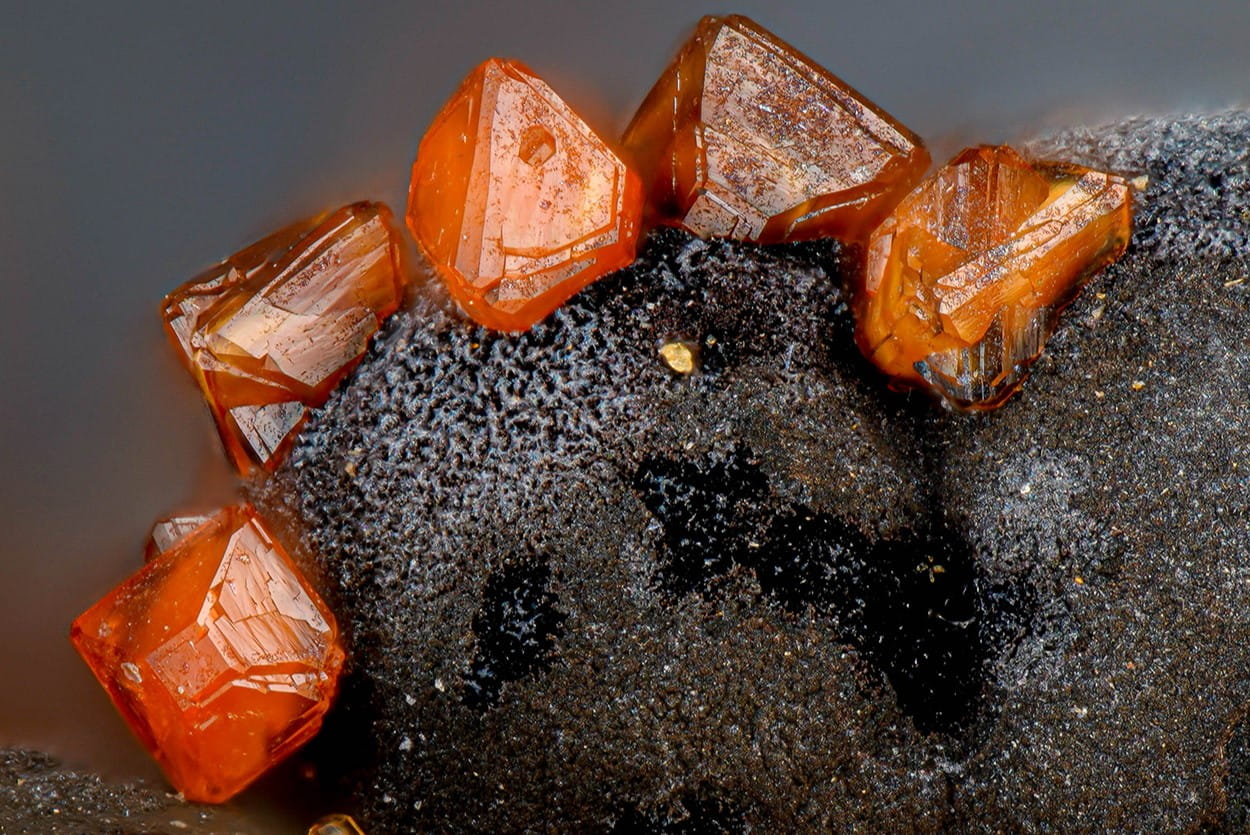
Cyrilovite is a rare mineral that has intrigued geologists and mineral enthusiasts alike. Found primarily in phosphate-rich environments, this mineral boasts a unique chemical composition and striking appearance. But what exactly makes Cyrilovite so special? Cyrilovite is known for its vibrant yellow to greenish-yellow color, often forming in small, prismatic crystals. Its chemical formula, NaFe3+PO4(OH)·H2O, reveals a fascinating structure that includes sodium, iron, and phosphate. This mineral is not just a pretty face; it also provides valuable insights into geological processes and the environments where it forms. Whether you're a seasoned collector or a curious newcomer, learning about Cyrilovite can deepen your appreciation for the natural world. Ready to dive into 30 intriguing facts about this captivating mineral? Let's get started!
Key Takeaways:
- Cyrilovite is a rare, yellow-brown mineral found in the Czech Republic and Germany. It's prized by collectors and helps scientists understand phosphate deposits.
- With its unique properties and history, Cyrilovite is a sought-after addition to mineral collections and provides valuable insights into geological processes.
What is Cyrilovite?
Cyrilovite is a rare mineral that intrigues geologists and mineral enthusiasts alike. It has unique properties and a fascinating history. Let's dive into some interesting facts about this mineral.
-
Cyrilovite is a phosphate mineral with the chemical formula NaFe3+3(PO4)2(OH)4·2H2O.
-
It was first discovered in 1953 in the Czech Republic.
-
The mineral is named after Cyrilov, a village in the Czech Republic where it was initially found.
-
Cyrilovite typically forms in oxidized zones of phosphate deposits.
-
It belongs to the monoclinic crystal system, meaning its crystals have three unequal axes with one inclined angle.
-
The mineral has a Mohs hardness of 3.5, making it relatively soft compared to other minerals.
-
Cyrilovite's color ranges from yellow to brown, often with a vitreous to dull luster.
-
It is often found in association with other minerals like beraunite, dufrénite, and cacoxenite.
Chemical Composition and Structure
Understanding the chemical makeup and structure of Cyrilovite helps in identifying and studying it further. Here's what makes up this unique mineral.
-
Cyrilovite contains sodium (Na), iron (Fe), phosphorus (P), oxygen (O), and hydrogen (H).
-
The presence of iron gives Cyrilovite its distinctive yellow to brown color.
-
Its crystal structure is composed of layers of iron and phosphate tetrahedra.
-
Water molecules are an integral part of its structure, contributing to its overall stability.
-
The mineral's specific gravity ranges from 2.8 to 3.0, indicating its relative density.
Occurrence and Locations
Cyrilovite is not found everywhere. Its occurrence is limited to specific geological settings. Here are some notable locations where it can be found.
-
Besides the Czech Republic, Cyrilovite has been found in Germany.
-
It also occurs in phosphate-rich environments in the United States, particularly in South Dakota.
-
The mineral is often discovered in old mine dumps where phosphate minerals have oxidized.
-
Cyrilovite is typically found in small quantities, making it a rare and sought-after specimen for collectors.
Uses and Significance
While Cyrilovite may not have widespread industrial uses, it holds significance in other areas. Let's explore its importance.
-
Cyrilovite is primarily of interest to mineral collectors due to its rarity and unique properties.
-
It is used in geological studies to understand phosphate mineralization processes.
-
The mineral can provide insights into the oxidation zones of phosphate deposits.
-
Cyrilovite specimens are often displayed in museums and educational institutions.
Physical Properties
The physical characteristics of Cyrilovite make it distinct and identifiable. Here are some key properties.
-
Cyrilovite has a brittle tenacity, meaning it breaks easily under stress.
-
Its streak, the color of its powdered form, is typically white.
-
The mineral exhibits no cleavage, meaning it does not break along specific planes.
-
Cyrilovite has a sub-conchoidal to uneven fracture, describing how it breaks.
Interesting Tidbits
There are some lesser-known but fascinating aspects of Cyrilovite that add to its allure. Here are a few.
-
Cyrilovite can fluoresce under ultraviolet light, showing a weak yellow glow.
-
The mineral's name is sometimes misspelled as "Cyrilovite" instead of "Cyrilovite."
-
It is often studied alongside other rare phosphate minerals to understand their formation.
-
Cyrilovite's rarity makes it a prized addition to any mineral collection.
-
Despite its softness, well-formed Cyrilovite crystals can be quite striking and beautiful.
The Final Word on Cyrilovite
Cyrilovite, a rare and fascinating mineral, holds a unique place in the world of geology. Found primarily in phosphate-rich environments, this mineral's striking yellow-green color and crystal structure make it a subject of interest for collectors and scientists alike. Its chemical composition, primarily consisting of sodium, aluminum, and phosphate, contributes to its distinct properties and rarity.
Understanding cyrilovite's formation and occurrence helps geologists trace the geological history of the regions where it's found. This mineral's rarity and beauty also make it a prized specimen for mineral collectors. Whether you're a seasoned geologist or a curious enthusiast, cyrilovite offers a glimpse into the intricate and diverse world of minerals.
So next time you come across a piece of cyrilovite, you'll appreciate not just its beauty but also the rich geological story it tells.
Frequently Asked Questions
Was this page helpful?
Our commitment to delivering trustworthy and engaging content is at the heart of what we do. Each fact on our site is contributed by real users like you, bringing a wealth of diverse insights and information. To ensure the highest standards of accuracy and reliability, our dedicated editors meticulously review each submission. This process guarantees that the facts we share are not only fascinating but also credible. Trust in our commitment to quality and authenticity as you explore and learn with us.
